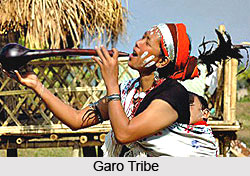 Reorganisation of the state of Assam and the north east faced unique problems which arose right away after Independence and made the process far more complicated and violent than elsewhere in the country at the time for the central government faced open, unambiguous secessionist demands from non Hindu tribal groups. A number of sets of ethnic confrontations intersect in Assam: between Hindus and Muslims, linguistic groups (particularly Assamese and Bengali speakers), plains peoples and tribal hill peoples, plains tribals and non tribals, and the indigenous population and a large migrant population. In Assam, the specific problems of states reorganisation centered around the demands of the tribal peoples, even if the several sets of ethnic issues at times overlapped and influenced each other. Moreover in the 1990s, new rebellious and secessionist movements have arisen in Assam both among the plains tribal peoples and among the governing Assamese Hindu population as well.
Reorganisation of the state of Assam and the north east faced unique problems which arose right away after Independence and made the process far more complicated and violent than elsewhere in the country at the time for the central government faced open, unambiguous secessionist demands from non Hindu tribal groups. A number of sets of ethnic confrontations intersect in Assam: between Hindus and Muslims, linguistic groups (particularly Assamese and Bengali speakers), plains peoples and tribal hill peoples, plains tribals and non tribals, and the indigenous population and a large migrant population. In Assam, the specific problems of states reorganisation centered around the demands of the tribal peoples, even if the several sets of ethnic issues at times overlapped and influenced each other. Moreover in the 1990s, new rebellious and secessionist movements have arisen in Assam both among the plains tribal peoples and among the governing Assamese Hindu population as well.
At Independence, there was a multiplicity of tribal groups in Assam, speaking a wide array of languages. Although the languages of the tribal peoples are completely distinct from Assamese and although Christianity was spread to many of them, language and religion were less important issues in the demands of the spokesmen of the tribal peoples for separation from the province of Assam and secession from India. The main disagreement for separation and secession was that tribal peoples were basically not Indians at all. The reorganisation of Assam and the border region, previously called the Northeast Frontier Agency (NEFA), took place in stages and led to the formation of four new predominantly tribal states: Nagaland, granted statehood in 1963; Meghalaya formed as a separate state in 1972 for the Garo, Khasi, and Jaintia tribes; Arunachal Pradesh, the name given to NEFA, created as a Union Territory then converted to full statehood in 1972; and Mizoram, formed into a Union Territory in 1971 and granted the status of a separate state in 1987.
Of a number of tribal movements, the two which have attracted the most attention because of their widespread popular support, overtly secessionist goals and prolonged insurrectionary activities were those of the Nagas and the Mizos.




















